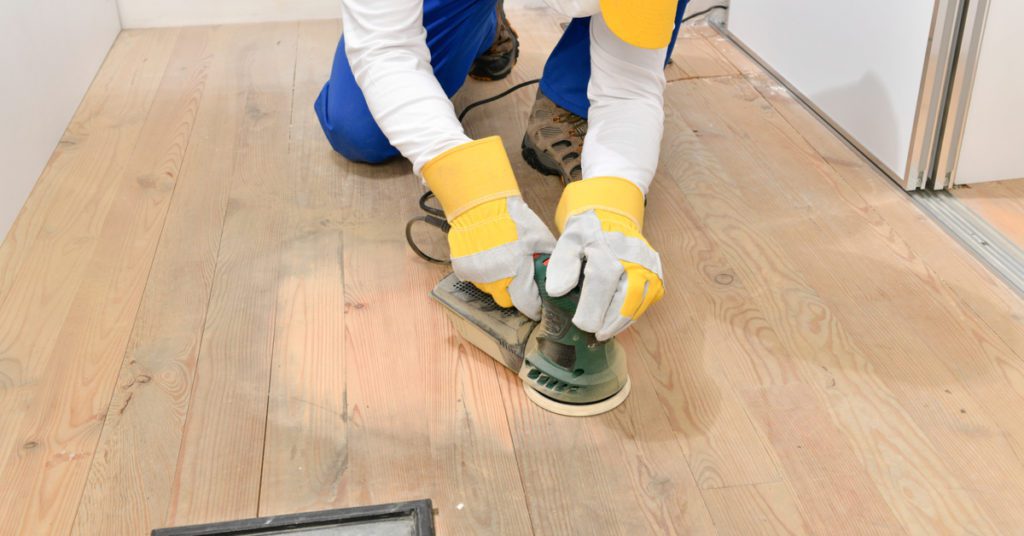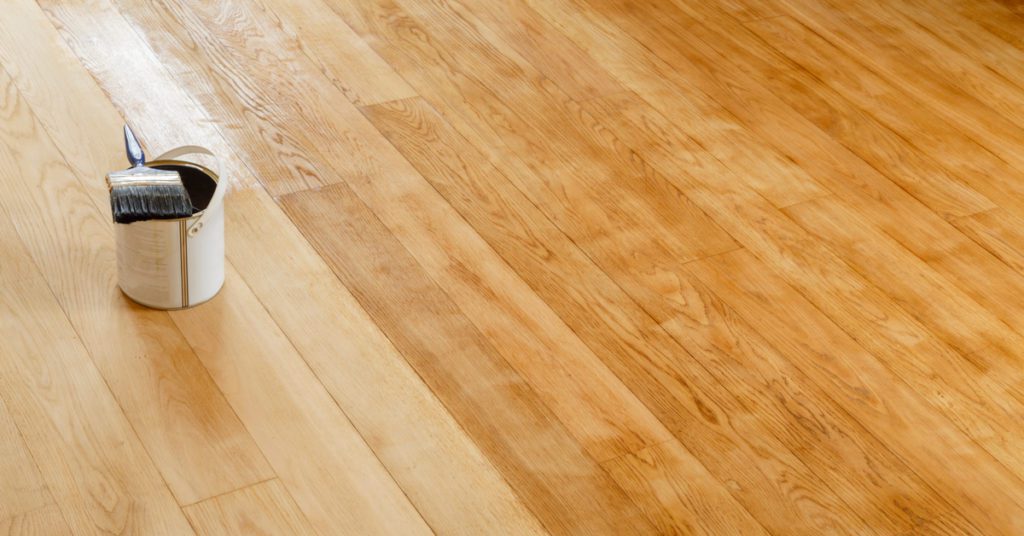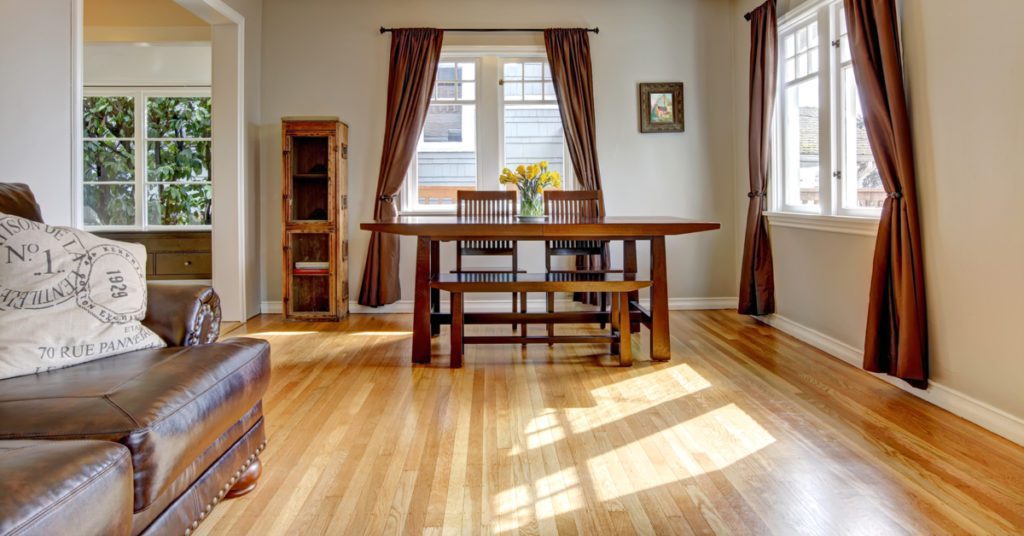DIY A Homeowner’s Guide to Restoring Hardwood Floors
This article is an instructional homeowner’s guide to sanding and finishing hardwood floors. It is a step-by-step guide for the do-it-yourself homeowner using tools available at any local hardware store.
Hardwood floors are elegant and stylish but also easy to care for and highly durable. Older floors that have worn out can be readily restored and modernized. Hardwood floor restoration not only brings the look and feel of a room up to date, but it adds long-lasting value to the home.
For the brave do-it-yourself homeowner, restoration can be fulfilling and cost-effective. Follow these steps within this homeowner’s guide to refinish and restore drab and tired wood floors.
Preparation

1, Wear proper safety equipment – gloves, safety glasses, and a dust mask
2, Before removing any woodwork, grab a marker and painter’s tape to label each piece so that it can be easily replaced after the renovation. Remove doors that swing over the floor. Carefully remove the shoe and baseboard molding with a small pry bar and hammer. Wedge the pry bar behind the molding, working along the length of each piece to carefully loosen it. Remove any furnace vents or cold air returns that are in contact with the floor.
3. Sweep up the room and remove any rogue nails left behind from the molding.
4. Before sanding, ensure that all floorboards are firmly nailed down and that no nails are left sticking up. Also, keep in mind that while damage from wear and tear can be removed with sanding, severe water damage, broken floorboards, and pet stains cannot. These areas will more than likely need to be replaced with new floorboards before sanding.
5. Using a thin plastic drop cloth secured by painter’s tape, cover any windows, doors, power outlets, or furnace vents in the room. This will save time on clean-up later as well as minimize the amount of sawdust that can travel throughout the home.
6. Rent a random orbit sander and a floor edger from a hardware store. The tool rental associate can answer questions and provide guidance on how to use the specific models provided. Ask for a demonstration if possible, or practice using each machine on an old piece of plywood before applying it to hardwood floors. Start with the random orbit sander fitted with the coarsest grit sandpaper (#36 – #40 grit). Begin in a corner and walk with the grain of the wood planks. Move the sander steadily forward, working in overlapping rows. Replace the sandpaper often for best results. After completing a thorough pass with the random orbit sander, switch to the floor edger with the same grit and sand the edges and corners of the room. Vacuum the floor before proceeding.
7. Repeat these steps with the remaining grits – #60, #80, then #100 grit, vacuuming the floor between each grit. It is important not to skip grits – each grit steps up from coarse to progressively more fine, erasing scratches and imperfections with each step.
8. Once the floor is sanded, vacuum and clean it thoroughly. Use mineral spirits to wipe down the floor and tack cloth to remove any dust or debris left behind. Allow the mineral spirits several hours to dry completely.
Start Staining

1. To stain, start with a small area (about four feet) and apply stain with a clean rag, foam applicator, or paintbrush. Wipe the stain on with the wood grain, and then wipe off any excess that does not soak into the floor. Do not leave pools of stain, as it will cause uneven coloring of the floor. Let the floor dry according to the manufacturer’s instructions.
2. There are a variety of products that can be used for the final finish coat. Oil-based polyurethane is a great choice due to its durability. Polyurethane is available in gloss, semi-gloss, satin or flat, depending on the intended result. To apply polyurethane, a lambskin applicator works best, but a paintbrush rated for polyurethane or oil-based products will suffice. For a large room or whole house, consider using a lambskin floor applicator that can be attached to an extension pole.
3. Stir the polyurethane carefully to avoid creating bubbles in the mixture. Working in small sections, apply the polyurethane with the wood grain in broad, smooth strokes. Most manufacturers will recommend multiple coats of polyurethane.
4. Let each coat dry completely, sand with #220 grit sandpaper, vacuum the floor thoroughly and then wipe up dust with a tack cloth before applying the next coat.
5. The final coat may need to stand for up to a week before furniture or area rugs can be replaced. Check the manufacturer’s instructions for details.
6. Once the floor is ready to accept foot traffic and furniture, replace the baseboard molding, shoe molding, furnace vents, and doors. Felt sliders can be placed on furniture legs to prevent scratches, and rubber pads can be placed under area rugs to provide better grip to the new floor.
The Job Is Now Complete, Enjoy

Restoring original hardwood floors revives and celebrates the history of an older home. Whether preparing a house for sale or simply updating the interior design, restoring the floor is a small change that has a huge impact on the overall warmth and style. With a little time, effort, and motivation, any homeowner can refinish and update their floors. Just simply follow this complete homeowner’s guide to restoring hardwood floors.
Need Help? Looking for a Professional To Stain Your Hardwood Floors?
Are you finding this homeowner’s guide to restoring hardwood floors a bit beyond your skill-set or that you do not have the time to do? Do not worry, you have come to the right place.
Get in touch with Carolina Blue Painting today.

